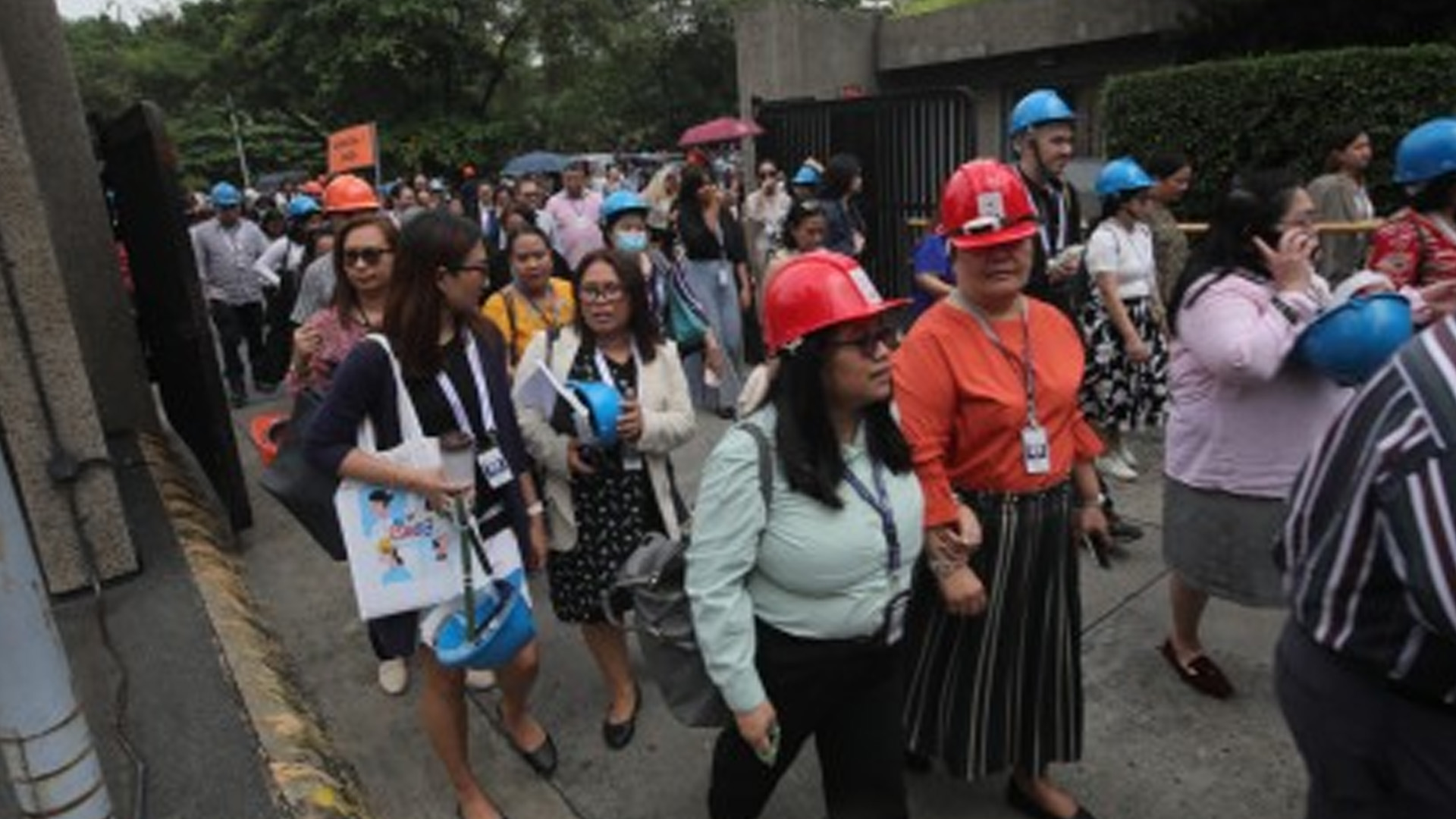The Philippine Institute of Volcanology and Seismology (Phivolcs) conducted an “earthquake preparedness survival talk” to information officers in Quezon City on Monday, recognizing their crucial role in informing the public on such disasters.
Phivolcs Science Research Specialist Nicole Jean Mercado, who held the talk among staff of the Philippine Information Agency (PIA), said the public should be urged to check the buildings, houses, and other structures, since old and damaged structures make these dangerous during earthquakes.
“They should know the hazards in their areas. Because during earthquake, it’s not just the ground shaking that they should watch out for. There’s also liquefaction, landslides, and tsunami,” Mercado said.
A mobile earthquake simulator was also placed at the PIA building for the employees to experience how it would feel during varying earthquake intensities.
During the talk, Mercado also shared the possible scenarios during magnitudes 7.2 and 8.2 earthquakes.
A magnitude 7.2 earthquake could stem from the movement of the West Valley Fault, while a magnitude 8.2 could be generated from the movement of the Manila Trench and the Philippine Trench.
Mercado urged the public to focus on preparedness instead of fear.
“Don’t fret. There are influencers who repeatedly share an old post where our director was discussing the possibility of a magnitude 8.2 earthquake. Preparedness should be the focus,” he said.
Phivolcs Director Teresito Bacolcol earlier said the public should always be ready since the Philippines is part of the Pacific Ring of Fire and could be jolted by major earthquakes every now and then.
The strongest earthquake in the country was the magnitude 8.1 in Mindanao on August 17, 1976. The earthquake was generated by the Cotabato Trench, and caused a tsunami that claimed the lives of 8,000 people. (PNA)





